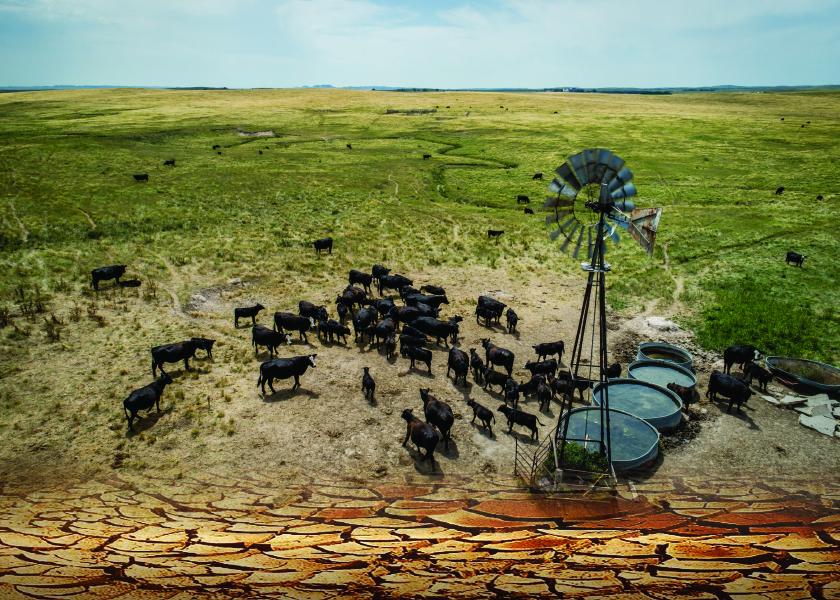The Impacts of Drought on Beef and Beyond

The nation is experiencing historic drought that covers nearly all of the West and most of the Northern Plains, and one estimate shows that 32% of all cattle in the U.S. are under drought level conditions. This drought has caused severe disruption for ranchers and will have a lasting impact on America’s cattle industry, says Drovers editorial director, Greg Henderson. During Farm Journal Field Days he sat down with a panel of experts to discuss the current state of the drought, including:
- Jason Johnson, Oregon Feedlot Operator
- John Nalivka, Sterling Marketing
- Larry Schnell, Stockman’s Livestock Exchange, Dickinson, North Dakota
- Niels Hansen, Rancher and Public Lands Council.
The situation is so dire, Schnell says, that in North Dakota ranchers have been telling him it’s the worst they’ve seen it, and not many of them went through the 1930’s but this is as bad as they’ve seen it since then.
“Our last decent rains came in September of 2019. We had 11 inches of rain, which is very rare in North Dakota to get fall rains of that amount. I think that's what got us through last year. There was quite a lot of subsoil moisture, so a lot of ranchers got pretty close to having a hay crop as compared to normal. This year, it's all gone,” he says. “Haying that is going on, a lot of people are not even cutting it. But if they are cutting it at all, they're talking about one bale per acre, some we're talking about acres per bale.”
It’s also caused more sales of cow-calf pairs, much earlier than usual. Schnell notes that they started selling higher numbers of cattle in March, and then in May the pairs started to come in.
“We're selling at least 500-to-700 cow calf pairs by every sale that we had for them. And then we went two days a week, through the month of May and into June and now back to one day, a week since then. Normally this time of year, we would be going every other week and hope to get 200 or 300 head of cattle. We're probably averaging close to 1,000,” he notes. “Every other sale will get 1,500 or 2,000 head. But we're selling many, many more cows than normal. And the only reason we aren't even selling more is because these ranchers are trying to hold on until the calves get big enough to where they can either wean them or sell them. But even there, they're even some of those that are moving right now. Next week, we'll probably have 1,000 new crop calves, which is unheard of, in this part of the country this this time of year.
Johnson, who’s located in Oregon notes that his part of the country is in trouble as well.
“If we don’t receive significant moisture this winter we will be in real trouble. Many of the smaller operators are suffering with the rising cost of commodities such as grain and hay. We just see a total lack of outside forage here,” he explained.
On the PLC front, Hansen shared the story of one rancher was feeding hay to cows in June waiting for the range to improve so they could turn out. That didn’t materialize.
Next came a discussion of the numbers, shared by Nalivka, who covered historical data on annual cattle slaughter and the disruptions that have impacted the market, like the pandemic-forced closure of packing plants and the impacts to carcass weights.
To take a look at the figures, watch the On Demand presentation and Nalivka’s slides below.
Jason Johnson, Oregon Feedlot Operator, John Nalivka, Sterling Marketing, Larry Schnell, Stockman’s Livestock Exchange, and Niels Hansen, Public Lands Council, joined Drovers editorial director Greg Henderson to share their insights at Farm Journal Field Days. Log on to watch the replay. After registering, click the Join Education Sessions Here button and look for the On Demand sessions.
Farm Journal Field Days is a farm show designed to provide farm and ranch leaders across America with three days of in-person discussion, tours, solutions, entertainment and information from key industry leaders, as well as two days of virtual programming that is accessible from anywhere. It’s taking place this week – Aug. 23-27. Register now to join the fun!







